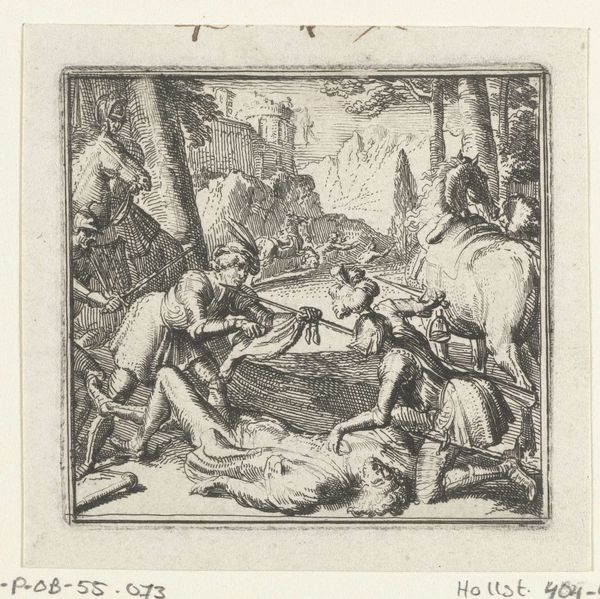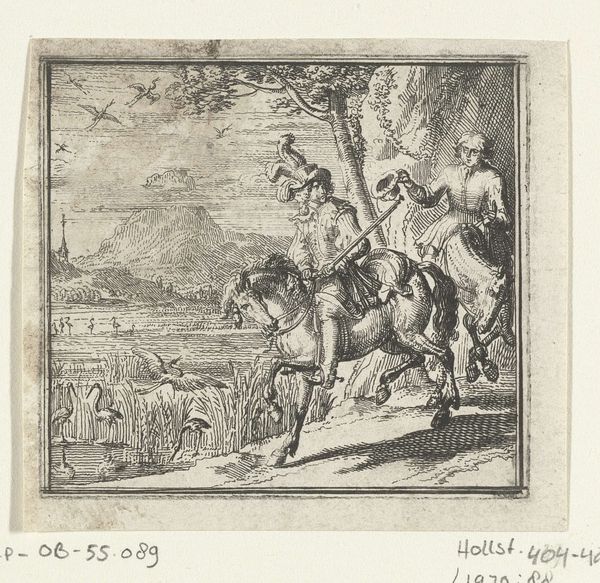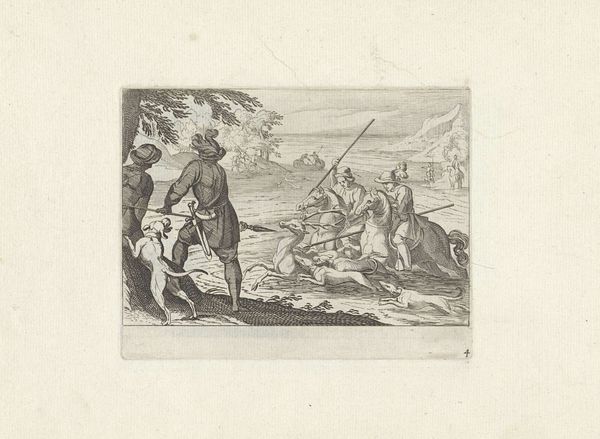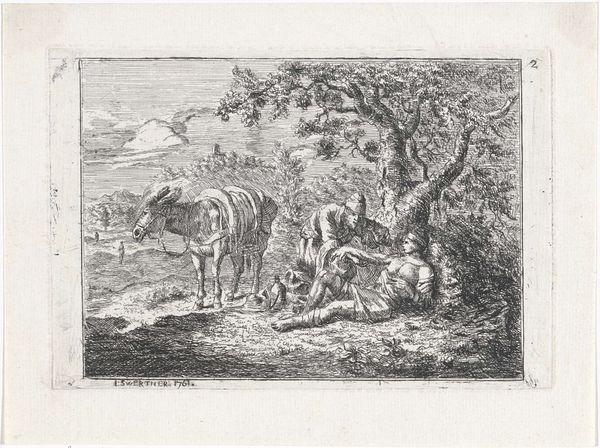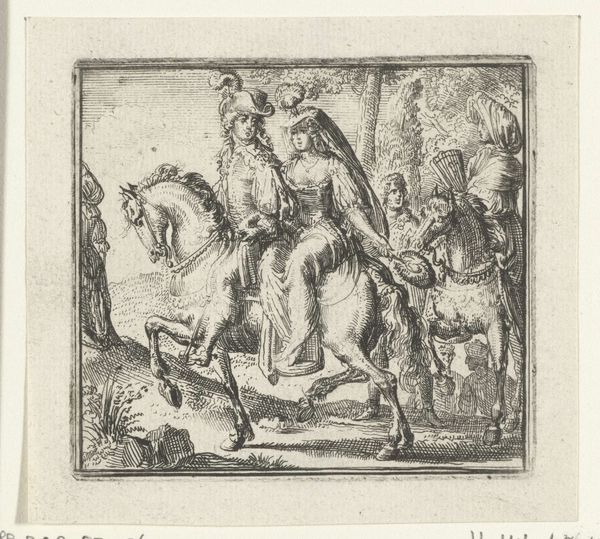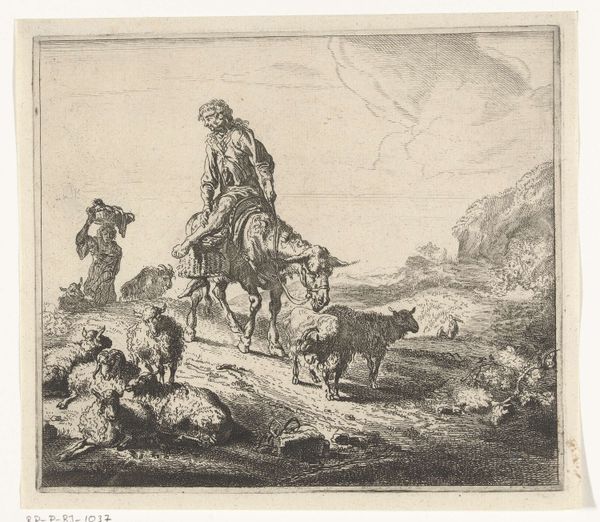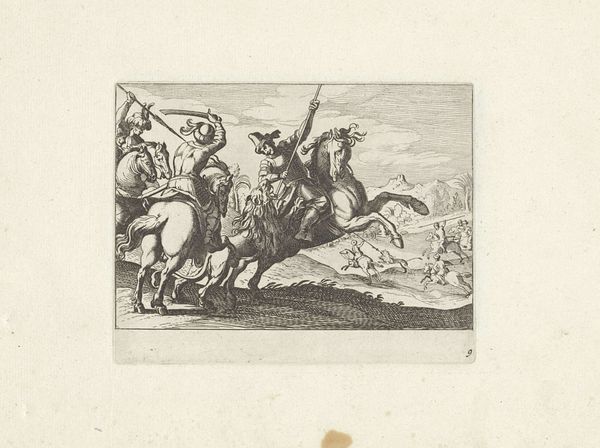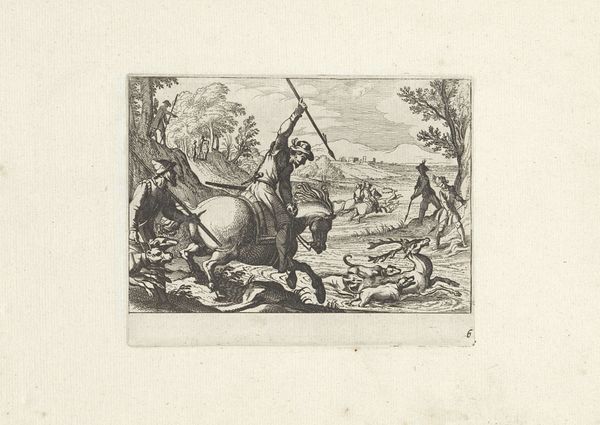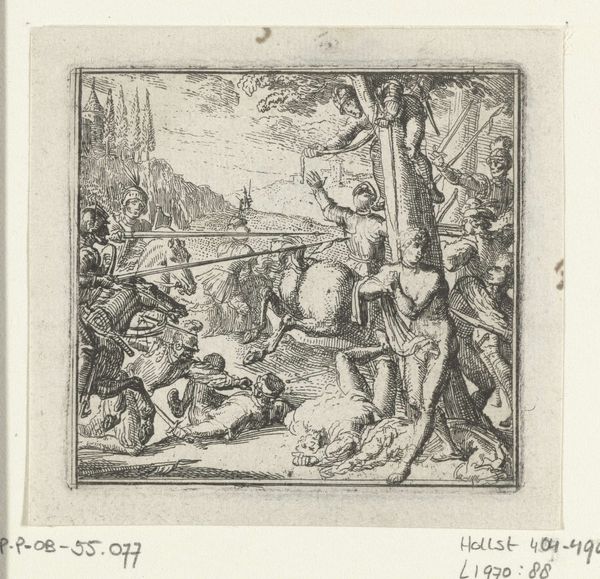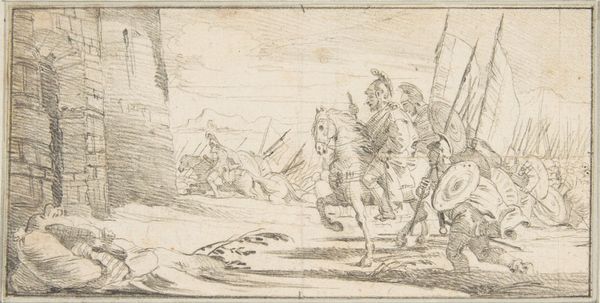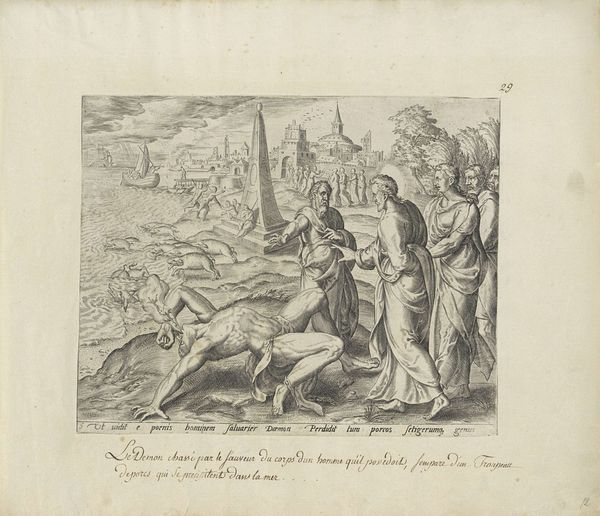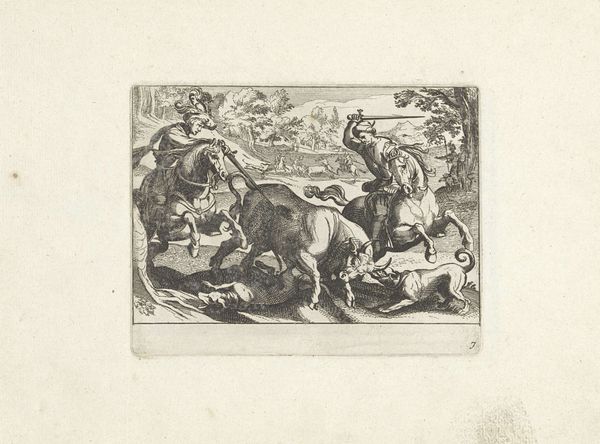
print, engraving
#
narrative-art
#
baroque
# print
#
pen sketch
#
old engraving style
#
history-painting
#
engraving
Dimensions: height 72 mm, width 78 mm
Copyright: Rijks Museum: Open Domain
Editor: Here we have Romeyn de Hooghe's 1697 engraving, "Illustration for Boccaccio's Decameron". There's a real sense of urgency here, with figures battling what looks like a stormy sea. It's dramatic, almost theatrical. How do you interpret this work, thinking about its place and time? Curator: Given its historical context, particularly its connection to Boccaccio's *Decameron*, we should see this as more than just a depiction of chaos. Consider the role of storytelling in times of crisis. The *Decameron* itself, written during the Black Death, offered escapism and social commentary through its tales. De Hooghe's illustration revives that public function of art. Editor: So, the artwork itself serves as a social text? Curator: Precisely. It’s interesting to consider how de Hooghe is not merely illustrating a story but is engaging with the socio-political function that stories, like those in the *Decameron*, played. This engraving becomes a reminder of art's role in times of upheaval, even in the late 17th century. What do you make of the presence of that box being carried overhead? Editor: That's interesting, I had not considered that. Now I’m wondering, does it represent the preciousness of stories, almost a repository of collective experience, being rescued amidst the storm? Curator: That’s a very insightful interpretation. In an age of increasing print culture and emerging public sphere, imagery like this played a key role in shaping collective memory and public discourse. De Hooghe was keenly aware of art's role in disseminating narratives, shaping perceptions, and even subtly influencing public opinion. Editor: I never considered it in that light before – the power of an image to do so much! Curator: Thinking about the social and historical context really adds depth to understanding its role, doesn’t it? Editor: Absolutely. Now, I see this as more than just a pretty illustration. It's a cultural artifact speaking to its time and ours. Thanks for this eye-opening explanation!
Comments
No comments
Be the first to comment and join the conversation on the ultimate creative platform.

